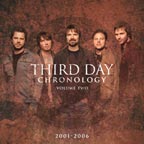 This may be a banner summer for Hollywood at the box office, but a movie milestone of a different kind was reached last month for the evangelical association Campus Crusade, International. Their cinematic adaptation of the Gospel of Luke, titled “The Jesus Project,” has now been translated into 1,000 languages–and that makes it the most translated film in history.
This may be a banner summer for Hollywood at the box office, but a movie milestone of a different kind was reached last month for the evangelical association Campus Crusade, International. Their cinematic adaptation of the Gospel of Luke, titled “The Jesus Project,” has now been translated into 1,000 languages–and that makes it the most translated film in history.
The original purpose of “The Jesus Film” was to create an evangelical presentation of the gospel in the native languages of different cultures around the world, to make the message more accessible. However, it is worth noting on this landmark occasion, that in spite of it’s far-reaching umbrella to win souls to Christ, not all Christinan groups have embraced “The Jesus Project.” In years past, Bible literalists and others have questioned everything from the marketing to the translation accuracy of the film.
Though I have a respect for the importance–not to mention the work involved–of attempting to translate the gospel into other languages as a step toward assimilating the message into different cultures (as opposed to completely shoving a foreign language on a group of people as a means of communication), I have always had two concerns with the project: One, it has always been a relatively mediocre film in terms of production values. And let’s face it, a film that is 25 years old probably needs a little refreshing after all this time.
The other concern I have had (since I spent my stint on the mission field about a decade ago) is that there is so much more that can be done–than simple translation–in presenting the gospel in a way that truly embraces an indigenous culture that has not had exposure to it. The film itself is still a very uniquely Western visual presentation of a Messiah, and I sometimes wonder how effectively that really plays in the 10/40 Window.


